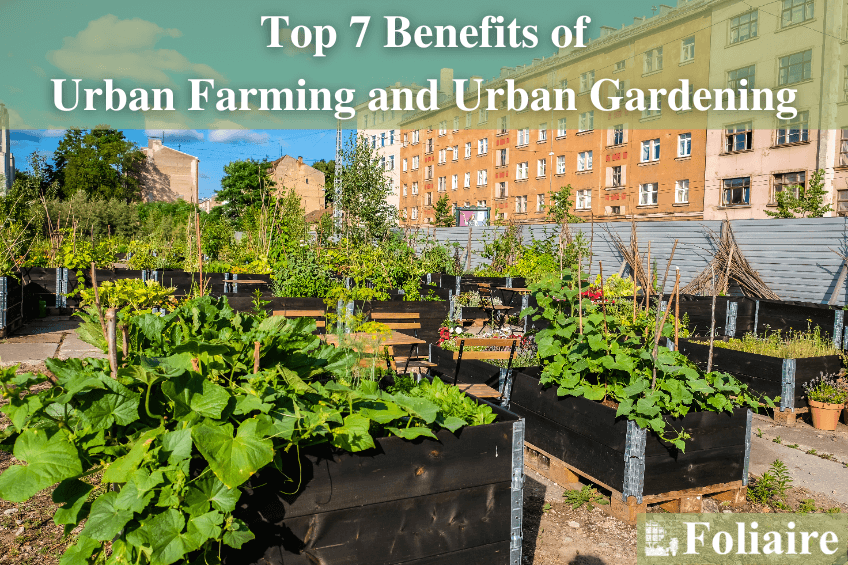7 Easy Facts About City Blooming Explained
7 Easy Facts About City Blooming Explained
Blog Article
How City Blooming can Save You Time, Stress, and Money.
Table of ContentsThe Definitive Guide for City BloomingNot known Incorrect Statements About City Blooming See This Report on City BloomingSome Ideas on City Blooming You Should KnowHow City Blooming can Save You Time, Stress, and Money.
Interested in expanding food for sale in the City of Chicago? Below is a listing of regularly asked inquiries relating to the rules and policies that cultivators should take into consideration when planning a metropolitan agriculture job.
The zoning modification does not change any other codes managing composting, structure permits, acquiring or renting City had building, business licenses or ecological contamination. There are existing codes that manage these problems and they remain completely effect and may apply to your job. Neighborhood yards are generally had or handled by public entities, civic organizations or community-based companies and kept by volunteers.
Urban farms expand food that is intended to be offered, either on a not-for-profit or for-profit basis. Because of their commercial purpose, metropolitan farms call for a company permit. Yes. A community yard is allowed to offer excess create that was grown on website if the sales are accessory or secondary to the yard's main function described over.
City Blooming Fundamentals Explained
Composting is allowed but just for plant product that is produced and utilized on site. The quantity of compost product can not exceed 25 cubic lawns at any type of given time according to the requirements in 7-28-715 of the City's Municipal Code. Yes. Due to the fact that the soil at a lot of new yard websites requires amending, garden compost, dirt, timber chips, or other products can be acquired to build or enhance the growing area - indoor plants.

If a building authorization is called for then the hoophouse will certainly be taken into consideration an accessory building. You can learn even more regarding the structure permit requirements by contacting the Department of Buildings. The 25,000-square-foot dimension restriction is intended to stop a solitary neighborhood yard from dominating a provided block or diminishing the block's existing household or industrial character.
The limitation does not apply to yards located in Public Open Area (POS) areas. Can there be more than one area yard that is 25,000 square feet on a single block? Yes. The size restriction uses to private gardens, not to individual blocks. No. Fence is not called for, nonetheless, yards that have large parking lot may be called for to install fencing or various other landscaping attributes.
The Single Strategy To Use For City Blooming
B1 & B2 areas require that all business use tasks be performed indoors. R districts restrict business task. The guidelines reflect the function and intent of the Zoning Code. Is secure fencing needed for urban farms? Yes. Fences might be needed, together with landscape design and screening, for sure car parking areas and outside work or storage areas depending on location and the particular task taking place.
Yes. Urban ranches call for structure authorizations and zoning authorizations before building. Various other types of city testimonial might be needed depending on particular structures, tasks, dimension, landscaping, licensing, public health and stormwater administration problems. A lot of these requirements are identified in the project design or allowing process, nonetheless, the candidate may be accountable to independently identify particular licenses or permits that might be called for.
Yes. The sort of certificate is determined by what is occurring at the website. The Department of Service Matters and Customer Security can help determine the details kind of company certificate that's needed. Yes. Off road auto parking is needed for a lot of commercial jobs in Chicago. The required number of garage is based on the variety of workers dealing with site and not the square video footage of the expanding room.
3 Easy Facts About City Blooming Shown

Yes. An urban farm can market garden compost material produced on site, nonetheless, the operation should follow the guidelines in 7-28-715 of the Chicago Municipal Code. Yes. Aquaponic systems are permitted indoors on metropolitan farms in many zoning districts. Nevertheless, a zoning review and building authorization is required in order to set up structures or systems and a service certificate is called for as described above.
Approximately five hives or swarms of honey bees might be kept as an accessory usage. Nonetheless, beekeepers must register with the Illinois Division of Agriculture. To find out more about the recommended zoning change you might speak to the Division of Housing and Economic Development, Bureau of Planning and Zoning at 312.744.8563.
Farming in cities and urban areas A city farm in Chicago. Urban agriculture describes different methods of growing. https://filesharingtalk.com/members/597974-cityblooming, processing, and dispersing food in urban locations. The term likewise relates to the location activities of animal husbandry, tank farming, beekeeping, and gardening in a metropolitan context. Urban farming is differentiated from peri-urban farming, which takes area in backwoods beside suburbs.
The 20-Second Trick For City Blooming
, that look for to form social networks founded on a common values of nature and area holism. These networks can create by way of formal institutional support, ending up being incorporated right into neighborhood town planning as a "transition town" motion for sustainable urban advancement.
The much more direct access to fresh vegetable, fruit, and meat items that might be know with metropolitan farming can improve food security and food safety while decreasing food miles, causing lower greenhouse gas emissions, thereby adding to environment modification mitigation. A few of the first evidence of metropolitan agriculture originates from Mesopotamia.
Report this page